
new life




Michele Simpson, RWSA senior civil engineer, touring folk around the new Rivanna Pump Station following the ribbon cutting, October 5, 2017..
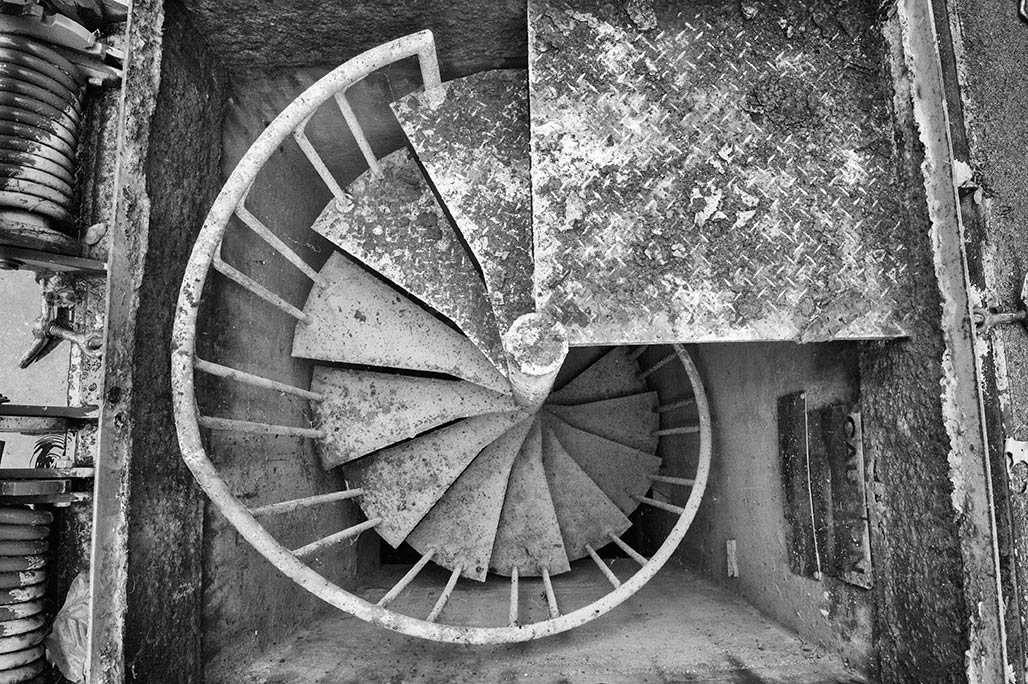
It was a seven year process from the old pump station to the new station. This is the circular stairway to the old RPS (Rivanna Pumping Station). A smelly hell-hole, next to a park in a residential neighborhood.
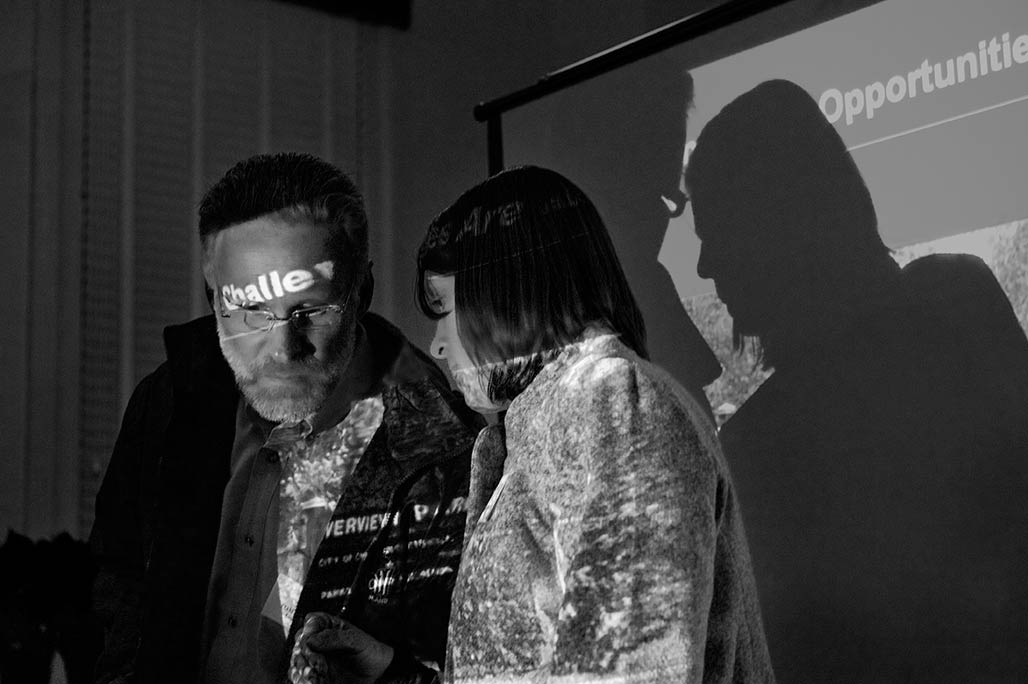
December 8, 2010. Tom Frederick of the RWSA and Janice Carroll of Hazen Sawyer confer during slide presentation to the Woolen Mills neighborhood regarding RWSA’s Rivanna Interceptor Sanitary Sewer Pumping Capacity Improvements. The meetings continued for almost two years.
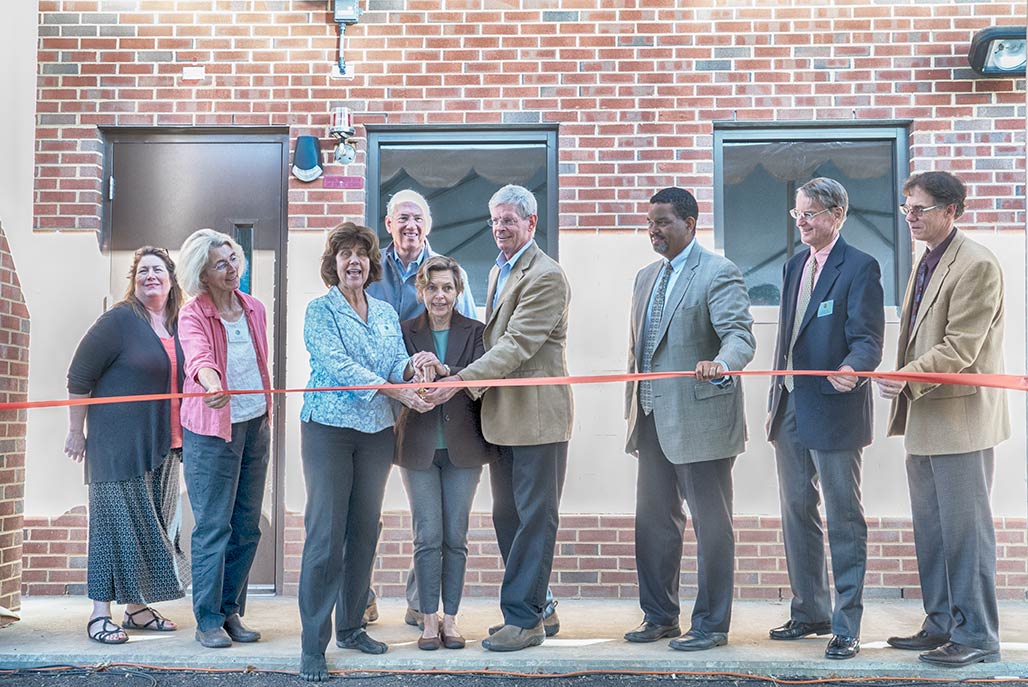
At the ribbon cutting for the new Rivanna Pump Station October 5, 2017 Charlottesville City Councilor Kathy Galvin spoke about the process.
“It is through that long series of meetings, those many many chats over coffee, walking the site, getting everybody to understand the significance of this, both at the very local level, which is the neighborhood, and then at the City level, then at the County level, then at the regional watershed level, it was a major learning experience… It was a big issue then. So I want to say thank you to the community for being good stewards of your home and of your neighborhood and of your city and of your region.”
listen here
At Pantops, Mcintire was attentive to the vestiges of a prior institutional landscape and a set of buildings that could be adapted for the treatment of patients with mental illness. In 1877, Reverend Edgar Woods had purchased 373 acres at Pantops and opened Pantops Academy, a boys’ preparatory school, with close connections to the University of Virginia.
The Academy promoted the healthy, uplifting, character of the site–a setting and a rhetoric that could have easily been adapted from education to healing patients. In 1894, the Academy catalog declared, “The place formerly belonged to Thomas Jefferson, and is on the hill opposite his home, MONTICELLO. Its name was given by him for two Greek words, meaning ‘All seeing,’ in allusion to the prospect, which embraces the town of Charlottesville, the University of Virginia and a wide extent of plain and mountain scenery, not excelled by any other portion of the land. The surrounding region is one of the most healthy which the country contains, and is absolutely free from every kind of malaria …. It is scarcely possible to emphasize too much the unsurpassed location of the Academy, which not only delights the eye with the wide range and beauty of the landscape, but which ensures the best sanitary conditions, through perfect drainage and purest mountain air. Its distance from Charlottesville secures it from town temptations.” The Pantops Academy drew much of its food from its own farmlands declaring, “The teachers and pupils live together as one large family. The table is largely supplied from the farm, thus commanding abundance of milk and cream from its own dairy, fresh vegetables and fruit from its own garden and orchard and its fresh meat from its own flocks.”
The Academy provided an indoor gymnasium but insisted that the site itself, with its elevated views, its hills, pastures, gardens, and river would provide for the healthy “physical culture” of the students with the “large grounds and the ample range the country thus affords.” Even though the Academy had closed in 1904, the prominent dorm and classroom building, built in 1884, and the rambling principal’s residence still dominated the site. Mcintire could imagine that they would be easily adapted for a psychiatric treatment hospital. Essentially what Mcintire could see in Pantops was what he had seen in the possibilities of a Rivanna public park–a landscape that would provide comfort and engagement and continue to cultivate the vital historical relationship between people in the region and their river.
It was only a matter of months between Mclntire’s Pantops purchase in July 1929 and the crash of the stock market. In the midst of the Depression, the University was not able to expand to Pantops, and in 1937 the University’s Board of Visitors resolved to sell Pantops to James H. Cheek for use as a private country estate and horse farm. The proceeds of the sale were devoted to the development of psychiatry at the University hospital. In the late twentieth and early twenty-first century, Pantops was divided for private residential and commercial developments. State Farm Insurance opened a regional headquarters on part of the land in 1979. The Pantops Shopping Center opened in 1984. The Westminster Canterbury Retirement Community opened in 1990 and the new Martha Jefferson Hospital moved to Pantops in 2011. By 2010, Free Bridge carried an average of 38,000 cars a day over the Rivanna between Pantops and Charlottesville; however, the automotive landscape that gripped the river and determined adjacent lands uses did little to connect people to this particular and special place or to the Rivanna itself, with its rich historical, cultural, and environmental resources.
Mclntire’s vision for the Rivanna embodied a complex ideal concerning the proper relationship between the Rivanna, the broader development of the city, and the citizens of Charlottesville. Interestingly, the person who enacted part of this vision in the wake of Mclntire’s failure was John Wesley Bagby (1888-1968), a life-long employee of the Charlottesville Woolen Mill, who labored initially as a mill hand and became the superintendent of the dye works. In 1928, Bagby purchased 23 acres of the Albemarle Golf Club lands along the Rivanna for $3,000. Around 1940, Bagby began using his land as a site for periodic circuses and carnivals. This tradition lasted for half a century. When the three-ring Barnum and Bailey circus visited in 1954, the enormous circus tent pitched on the banks of the Rivanna, just south of Free Bridge, would accommodate 10,000 spectators who came to see elephants, tigers, clowns, and high-wire gymnasts perform. Here was a vision of a city gathering along the river for amusement, entertainment, relaxation, and neighborly socializing. But even these events only took place periodically.
The rising national environmental movement began to frame local connections to the Rivanna from the 1960s onward. The Virginia Assembly passed the Scenic River Act in 1970; the Act required that scenic values be considered in public planning decisions around designated scenic rivers and established regulations to prevent the construction of dams that impeded the flow of water on scenic rivers. The section of the Rivanna River in Fluvanna County was designated in 1974, and the designation was moved upstream to the dam at the Charlottesville Woolen Mills in the late 1980s and to the South Fork Reservoir Dam in 2009; this later designation was granted after the Woolen Mills Dam was removed in 2007 to promote the ecological health of the river and its fish population. The opening of a jointly purchased city-county park in 1986, now named Darden Towe Park, prompted a series of initiatives in the 1980s and 1990s to open trails along the Rivanna with legal easements over privately held property. The trails now amount to ribbon parks and are popular for outdoor exercise, walking, running, and biking.
The environmental focus on the Rivanna River is a much narrower vision than Paul Goodloe Mcintire had tried to effect. When Charles Hurt filed plans for the Pantops Shopping Center in the 1980s, people advocating for the Rivanna’s ecology opposed the plan, worrying about pollution, run-off, and flooding. The Rivanna represented a problem and a threat for the Pantops Shopping Center development. The Center ended up being constructed with its back to the Rivanna, largely disengaged from the river.
Mclntire’s failed 1920s plans for connecting the city and the Rivanna represented a more complex integrated vision that reflected the historical realities of the river’s significant place in the region. The vision saw people living, working, recreating, and being healed in a landscape that intermingled human artifice with a key environmental and cultural system-the Rivanna River. In the early twentieth-first century, the Rivanna is part of many people’s lives in the region. When they turn on the tap in their sinks, water arrives from the South Fork of the Rivanna River. When their streets and houses shed rainwater, or when they flush their toilet, they send away liquid waste that eventually ends up in the Rivanna. And yet relatively few people really experience, know, or understand the Rivanna River. The rise of the single purpose planning, for recreation, water supply, sewage disposal, transportation, and housing has exacerbated this reality. When Mclntire’s vision for the Rivanna failed, many citizens in Charlottesville lost sight of their history and their river.
Paul Goodloe McIntire’s Rivanna: The Unexecuted Plans For a River City is by Daniel Bluestone and Steven G. Meeks. This article was published in Volume 70 2012 of the Magazine of Albemarle County History by the Albemarle Charlottesville Historical Society. Copies of the Magazine are available at www.albemarlehistory.org
Paul Goodloe Mclntire’s ambitions for the Rivanna River did not end even after he established the public park north of downtown in 1926. In July 1929, Mcintire purchased a 362-acre tract of Pantops, including an expansive frontage on the Rivanna River. He donated the land to the University of Virginia in the hope that the University would establish a psychiatric hospital on the land. This land at Pantops had a storied history stretching back to the eighteenth century. Thomas Jefferson inherited the land from his father. From the edge of the Southwest Mountains, Pantops offered sweeping views of the Rivanna and the surrounding region. In 1797, Jefferson deeded Pantops to his daughter Maria as a dower gift for her marriage to John Wayles Eppes. Jefferson later leveled a house site at the top of Pantops, expecting Maria and her husband to build a house and settle there, within view of Monticello. Maria died in 1804, however, and the house was never built. Pantops continued in intensive agricultural production. In 1860, Meriwether Lewis Anderson, his family, and his slaves operated a large plantation at Pantops with 14 horses, 11 milk cows, 12 oxen, 10 beef cattle, 53 sheep, and 115 pigs. In 1860, they harvested 15,000 pounds of tobacco, 2,400 bushels of wheat, 3,000 bushels of corn, 1,500 bushels of oats, and 30 tons of hay. They also cultivated potatoes, fruit from an orchard, and produced 850 pounds of butter and 250 pounds of honey.
In 1929, Mcintire envisioned an institutional and healing landscape at Pantops that could accommodate patients suffering from mental illness and promote the “teaching of psychiatry and nervous diseases in general.” There was personal poignancy behind his plan; Mclntire’s daughter, Virginia Charlotte Mcintire, had entered Richmond’s Westbrook Sanatorium in 1921, at the age of twenty, and was still living there eight years later when McIntire purchased Pantops.
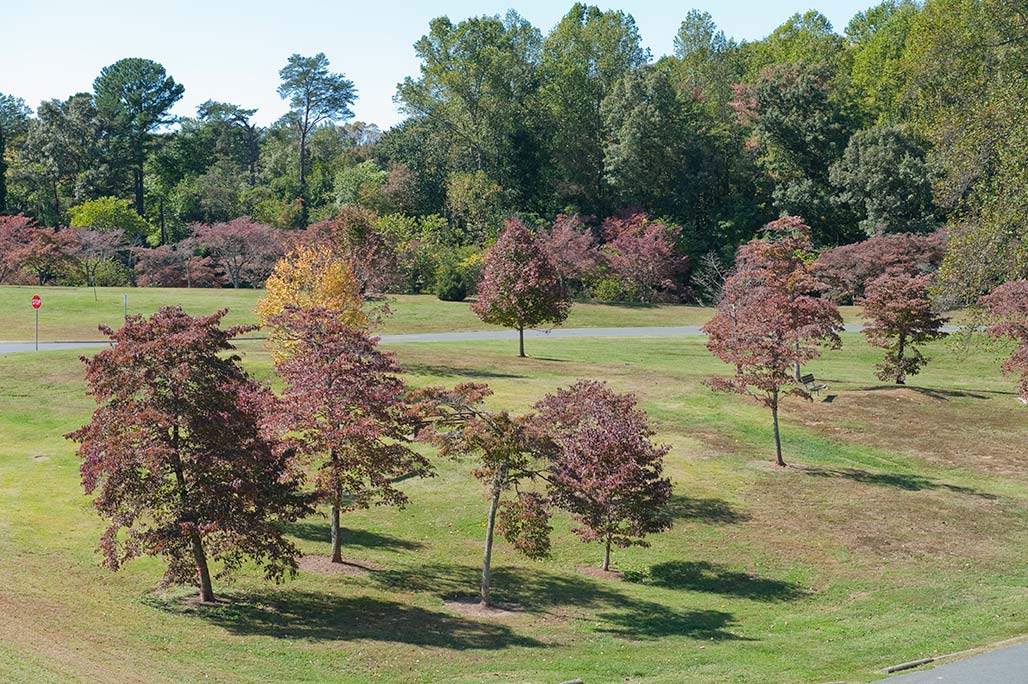
Mclntire’s failure to purchase parkland along the Rivanna delayed the opening of a major landscaped park in Charlottesville for six years. In January 1926, Mcintire purchased a 92-acre section of the Old Mason Farm located north of Charlottesville. The Mason site had the rolling meadowland character the land along the Rivanna; however, it lacked the diversity found along the Rivanna with its old “prime Forest,” steep hillside, riverside pastures, rock outcroppings, and the well-established sod. Schenk’s Branch, a tributary to Meadow Creek (and to the Rivanna beyond) bounded the eastern edge of what became Mcintire Park. It was relatively modest in size and lacked the majestic river bends and cultural significance of the Rivanna. Moreover, the short interval between the establishment of the park and the collapse of local building caused by economic crash of 1929 meant that the city’s development did not really extend out to and around Mcintire Park until after World War II. If the Rivanna park had been established in 1920 it would have provided a magnet for the 1920s residential boom. The east end of Charlottesville would have been organized differently. It would have developed with the park and river as an essential presence, shaping the layout of street, block, and lot development and reaffirming the vital historical connections between the people in Charlottesville and the Rivanna. This possibility was presaged by the Charlottesville Land Company’s 1892 subdivision, The Farm; however, the connections would have been much stronger with Mclntire’s vision of a public park than developer’s plan for the private villas imagined in The Farm subdivision.
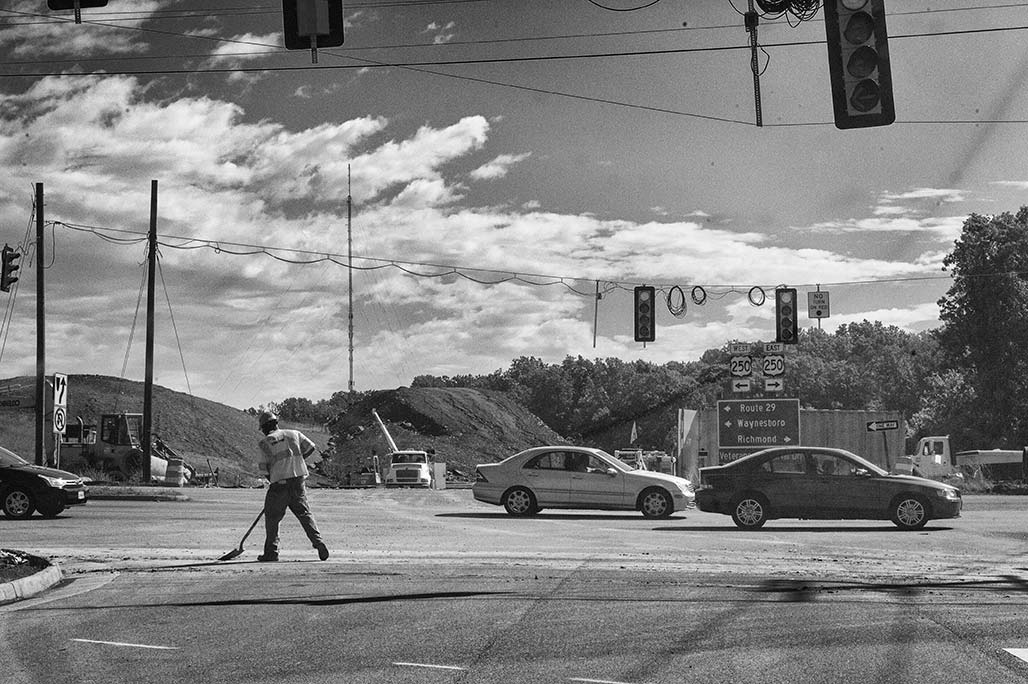
Paul Goodloe McIntire’s Rivanna: The Unexecuted Plans For a River City is by Daniel Bluestone and Steven G. Meeks. This article was published in Volume 70 2012 of the Magazine of Albemarle County History by the Albemarle Charlottesville Historical Society. Copies of the Magazine are available at www.albemarlehistory.org
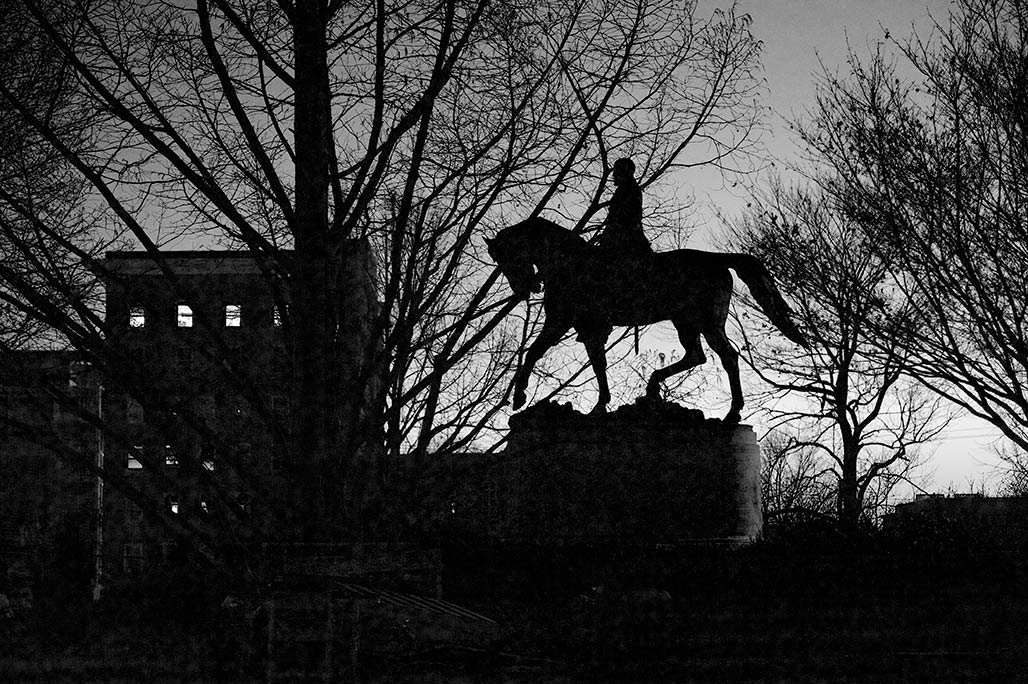
In 1920, Paul Goodloe McIntire approached the Albemarle Golf Club with an unusual proposition. He wanted to buy their five-year-old golf course and donate the land to the people of Charlottesville for use as a public park. The site was quite distinct from the two parks that McIntire had already donated to Charlottesville. In 1917, McIntire had purchased the historic Southall-Venable house, which occupied a full block in the grid plan of downtown Charlottesville, at Second and Market streets. Located two blocks east of Court Square, McIntire had the residence demolished and developed the square as a single block park to memorialize both his parents and Robert E. Lee. The Lee equestrian monument was completed in 1924. In 1918, McIntire purchased several houses along McKee Row, facing Court Square. Again, after demolishing the houses, he had the site landscaped as a park and he commissioned an equestrian statue to honor Thomas “Stonewall” Jackson, which was dedicated in October 1921. In 1919, McIntire built a public library on a lot facing Lee Park. The library joined churches, the post office, the courthouse, private law and business offices, and several residences that tightly bounded Jackson and Lee parks. These parks stood in the midst of the most densely built up area of Charlottesville.
McIntire envisioned something completely different for the large, landscaped park he hoped to develop along the Rivanna. Undoubtedly, many of the same features that attracted members of the golf club to the site also appealed to McIntire. The land had a highland section, next to the Riverview Cemetery; it had a steep sloped area, vestiges of the “prime Forest” that Thomas Farish had sought to preserve with its mature trees, rolling meadowland, expansive sodded areas, and a long river frontage on the Rivanna. This sort of topographical variety and expansiveness characterized the sites of some of the most celebrated landscaped parks that had constituted the landscape park movement in United States, which had originated in the mid-nineteenth century.
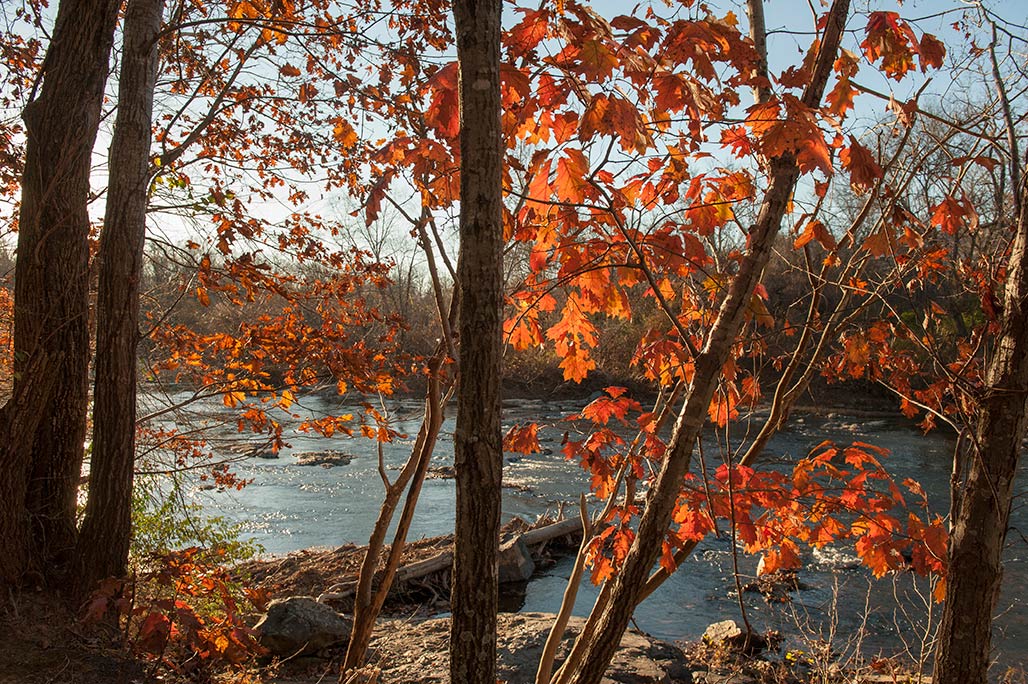
Preserving land for public parks in the face of urbanization in cities like Boston, New York, Philadelphia, Chicago, St. Louis, or Richmond certainly had much greater urgency than was apparent in late nineteenth and early twentieth century Charlottesville. The combined Charlottesville and Albemarle County population rose relatively slowly from 32,379 in 1890 to 36,693 in 1920. The city population rose from 5,591 in 1890 to 10,688 in 1920; however, a fair amount of the city’s increase came not through actual growth but through annexing the more densely settled parts of the county located immediately outside of the city’s corporate limits. In every direction, open agricultural land closely surrounded the settled parts of Charlottesville. Outdoor recreation and natural or agricultural scenery was easily accessible on all sides of the city. Indeed, the failure of the Charlottesville Land Company’s 1890s development of The Farm, followed in 1915 by the laying out of the golf course, underscored the distinction between small-town Charlottesville, with open pasture lands immediately adjacent to the downtown, and larger metropolitan centers where the agricultural landscape was entirely filled with building and street development. What is notable about Mclntire’s vision of a large landscaped park on the Rivanna was that it seemingly stemmed from his cosmopolitan sensibility gathered in his life in Chicago and New York and through European travel. It also reflected Mclntire’s deep optimism about the metropolitan future of Charlottesville, his childhood home. Mclntire’s City Beautiful campaign for Charlottesville involved giving the city the trappings of a larger and wealthier city. Thus, the landscaped park was, in large measure, less about pressing current needs than about a cosmopolitan gesture towards future urban attainment. The Daily Progress insisted that Mclntire’s plan would remedy one of the city’s “most serious deficiencies.” The newspaper recognized the park as yet another element in its acquisition of the trappings of cosmopolitan identity: “Although the people of this city have had every reason to be proud and gratified at the many bountiful provisions that have been made for them by the forethought and filial attachment of Mr. Paul Goodloe McIntire, that generous gentleman and citizen bountiful has realized the fact that without a public park the full measure of benefits most needed has not been made up.”
The Daily Progress confidently anticipated that the golf club membership would come to terms with McIntire for the conversion of the golf course into a public park because the club had so many members “noted for public spirit and a willingness to advance the city’s interests.” When negotiations began in April 1920, consensus and public spirit proved rather elusive. Initially, the members wanted McIntire to leave in place a nine-hole golf course essentially merging his public park with their golf club. McIntire responded that his park plan would require all of the club’s land and he asked them again to name a price for their land. The club then asked that McIntire buy land for the relocation of the golf course and agreed to exchange the Rivanna property for a new property. McIntire informed the leadership of the club that he considered their property “the most desirable site” for the “laudable purpose” he had in mind but he rejected a property exchange and again asked the club to name their price for their Rivanna land. Members were split on Mclntire’s offer and at first narrowly voted against a sale. Then they settled on an alternative. They would insist on continued free use of the course for the next three years, agreeing to sell the tract to McIntire for $55,000. The asking price was nearly three times the purchase price paid for the land just two years earlier. McIntire rejected the offer. Three months later, in July 1920, McIntire contacted the club’s officers again and suggested that they enter arbitration by neutral parties to arrive at a fair price for the land. The club felt that arbitrators might settle on a fair price but that would not solve the club’s problem of finding, and paying for, an appropriate alternative site. Rather than exercising “public spirit,” the club members rejected Mclntire’s effort to establish a public park on the Rivanna. The club maintained its riverside links, but only for seven more years. In 1927, the club merged with the group that established a new golf club at Farmington, west of Charlottesville. The new course relied on automobiles for access. The earlier idea of walking from downtown businesses to the Rivanna for outdoor leisure ended, disrupting a vibrant relationship between people living and working in central Charlottesville and the river that had helped define the region for centuries.
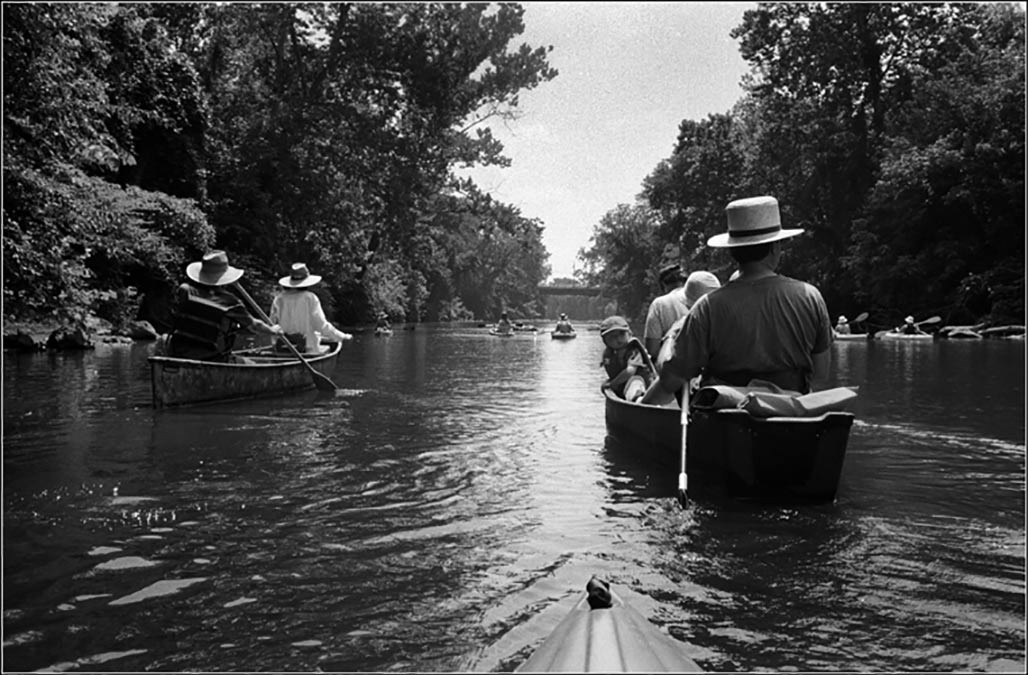
Paul Goodloe McIntire’s Rivanna: The Unexecuted Plans For a River City is by Daniel Bluestone and Steven G. Meeks. This article was published in Volume 70 2012 of the Magazine of Albemarle County History by the Albemarle Charlottesville Historical Society. Copies of the Magazine are available at www.albemarlehistory.org
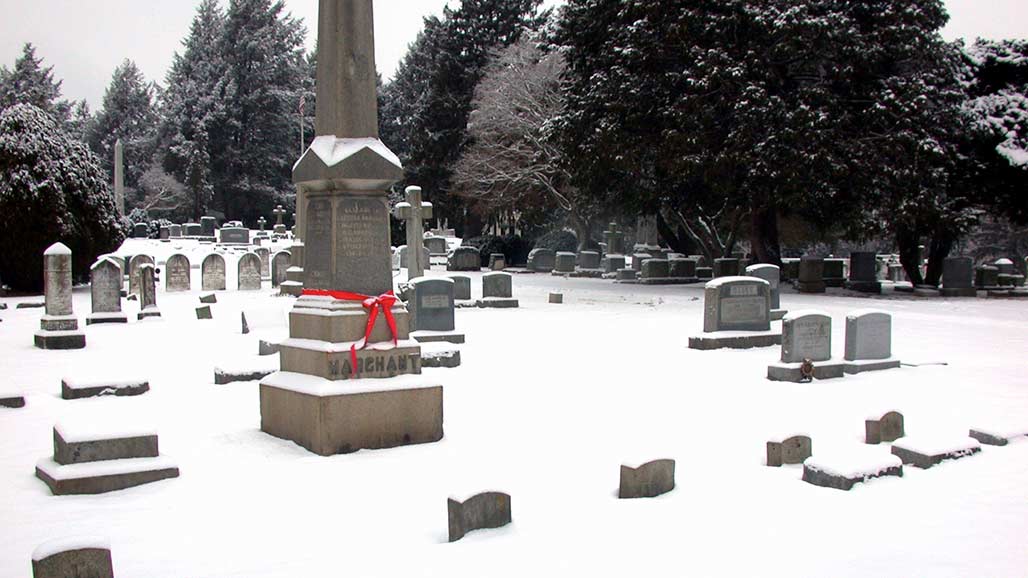
In 1915, five years after Henry Clay Marchant’s death, his heirs turned the riverside land over to a group that saw in it a great aesthetic and recreational resource. The heirs leased, and later sold, the Marchant tract to the Albemarle Golf Club. Established in 1914, the club had enjoyed rapid growth, initially using leased land on Rose Hill. In 1915, George R. B. Michie, a charter member of the club and the president of the People’s National Bank, approached the Marchant heirs and worked out a three-year lease for their land along the Rivanna River. For Michie, the arrangement seemed ideal. In 1909, Michie and his family had taken up residence in the 1820s house built by John A. G. Davis as the plantation house of The Farm.
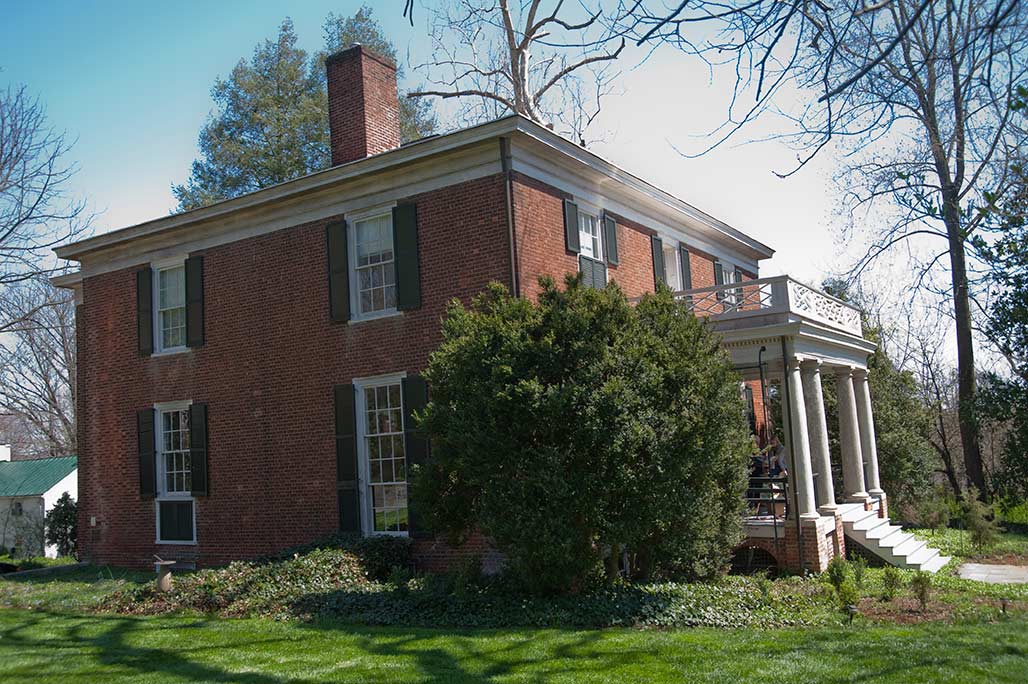
The house continued to look out over sod and pastures that the Marchant family had maintained since the 1890s. Now, with only minor changes, the landscape character would be preserved, and Michie would have the added advantage of having a golf course adjacent to his residence. For their part, the Marchant heirs insisted on preserving the pastoral character of the site. Their lease called for the land to be used for “athletic and grazing purposes only, and shall not be cultivated except so far as is necessary to get said land in the best condition possible for the raising of grass and sodding said land.” The sod could be removed only to build tennis courts and putting greens, and would have to be restored at the end of the lease. The existing grade of the land could not be altered, and no trees could be felled, save for a small orchard that could he removed if the golfers desired.
The rising popularity of golf in the late nineteenth and early twentieth century was directly tied to the perception that urbanization would erode the health and vitality of the American citizens. A growing number of people who had been raised in the outdoors, on rural farms, had now taken up residence in cities and were spending their working lives indoors. This fact made the golf course seem an especially attractive venue for such city-dwellers to ensure healthy and restorative leisure. Pointing to the new golf course along the Rivanna, the Daily Progress reported: “The new grounds are within a short walking distance from the business center of Charlottesville ….The club is meeting a long-felt want in this community-that of furnishing healthful outdoor exercise for business and professional men who are kept in store or office during the major portion of the day.” Many charter members of the Golf Club did indeed spend their days indoors doing white-collar work. For example, George Michie worked in the People’s National Bank at Third and Main. Marshall Timberlake ran his pharmacy at Fourth and Main. W.J. Keller and Harry George operated their Main Street jewelry shop between Second Street and Third Street. All of these men lived within a few blocks of their workplace . All could now golf along the Rivanna where tennis, baseball, and boating were also available. Clearly, the Golf Club represented a new use for the agricultural lands along the Rivanna. Indeed, despite the appearance of the land that seemed somewhat pastoral in nature, the Marchant heirs had forbidden the planting of corn on the site and in 1915 after a “very rigorous debate,” club members voted to terminate the pasturage of cows on the land, preferring to pay for the mowing of the fairways. Under these changed circumstances, the agricultural landscape grew increasingly attenuated; nevertheless, with the introduction of golf, the site retained both its alluring pastoral character and its intricate connection to the economic, residential, and social life of the region. In 1918, pleased with their location and the growth of their organization, the Albemarle Golf Club paid the Marchant heirs $18,800 and took full ownership of their riverside golf course.

Members of the Albemarle Golf Club, 1921. Although not pictured, women could join the club as non-voting members, paying half the annual membership fee of men while the entrance fee was waived. Photo courtesy collection of the Albemarle Charlottesville Historical Society.
Paul Goodloe McIntire’s Rivanna: The Unexecuted Plans For a River City is by Daniel Bluestone and Steven G. Meeks. This article was published in Volume 70 2012 of the Magazine of Albemarle County History by the Albemarle Charlottesville Historical Society. Copies of the Magazine are available at www.albemarlehistory.org

The timing of The Farm development did not bode well for its immediate success in 1892, the United States slid into one of its worst economic depressions in history. In November 1892, George W. Morris, President of the Charlottesville Land Company, reported to the company’s stockholders, “Booms have collapsed all over the State, and much money has been lost. A period of reaction has set in. It is not the intention of this report to hold out to any stockholder the hope of large and sudden profits from his stock. It will take time to realize on our assets…. But our properties practically belt the City of Charlottesville, and Charlottesville has never been so prosperous as she is today, nor has she ever grown so fast as she has done during the past twelve months. Our properties must become more and more valuable, and must eventually, even the most remote pieces, be in demand.” Despite these encouraging words, the Charlottesville Land Company sold very few individual lots at The Farm to suburban homebuilders; instead, over the next few years, the company sold off entire blocks of its development-many of them to Henry Clay Marchant, the wealthy proprietor of the Charlottesville Woolen Mills which operated on adjacent property along the Rivanna. Marchant maintained his large tract of The Farm in its historical agricultural use, as sod pastureland. The Charlottesville Land Company’s earlier plans–for riverside villas and a substantial suburban neighborhood–fell victim to the vagaries of the national economic cycle.

As the Charlottesville Land Company sold off The Farm in large blocks, one local developer purchased a nearly 28-acre tract of The Farm, envisioning a more depression-proof market for lots. This tract included a large portion of the “reservation” contained in 1892 plat of The Farm. Here in 1893, J.W Marshall and his business partners established the Riverview Cemetery, where lots would accommodate the dead rather than the living. The landscaped cemetery occupied the hilltop overlooking the Rivanna with a fairly regular pattern of blocks and lots. The cemetery tract also included land in the floodplain, which was laid out with a meandering walk where visitors could move down the hill from the graves to the banks of the river. As in the case of the Charlottesville Land Company plat for The Farm, the Riverview Cemetery plan clearly acknowledged the beauty and aesthetic character of the Rivanna. Both envisioned taking land that had been in agricultural production for over a century and a half and devoting it to new uses, ones that would cultivate, not crops, but the aesthetic sensibilities Charlottesville residents and visitors for area’s natural landscape.
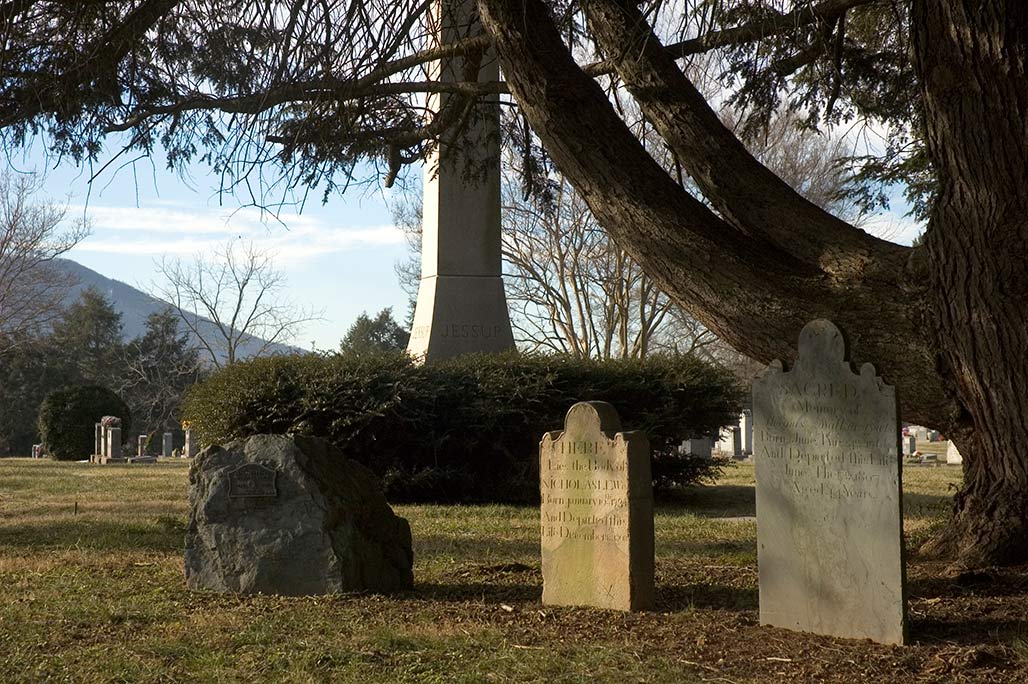
Paul Goodloe McIntire’s Rivanna: The Unexecuted Plans For a River City is by Daniel Bluestone and Steven G. Meeks. This article was published in Volume 70 2012 of the Magazine of Albemarle County History by the Albemarle Charlottesville Historical Society. Copies of the Magazine are available at www.albemarlehistory.org
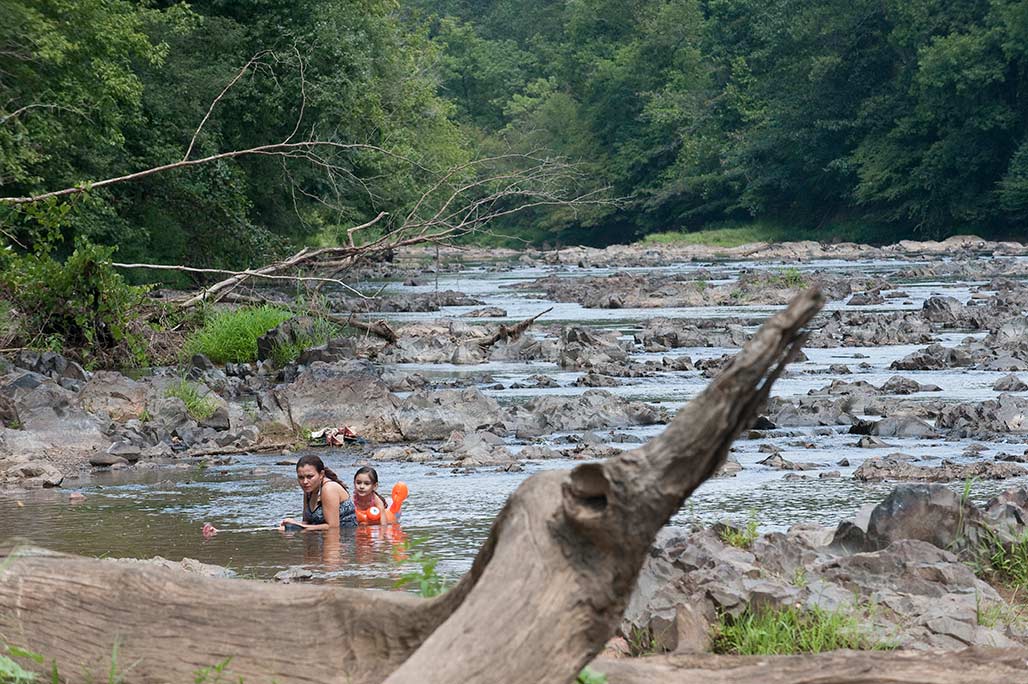
In his first lease of The Farm in 1866, Farish made restrictions that suggest he viewed the Rivanna as more than a property boundary, source of waterpower, commercial navigation artery, or ecological system. In addition to these, he viewed the river in scenic and aesthetic terms. In leasing The Farm to James E. Cooke, Farish designated areas where Cooke could gather fallen timber, but declared that Cooke, “binds himself not to injure, deface, cut down or destroy any trees whether they be for use or ornament growing upon the …leased land and more especially the prime Forest situated near the River, nor to plow up or otherwise break the sod on the steep hillside next to the River and west of the prime Forest but to continue the same in grass as it now is and keep it cleared of bushes and other filth that may grow upon it to the injury of the Grass.” This attention given to the forest, grass, and hillside suggests an aesthetic calculus concerning the river and its banks that went beyond the usual economic terms of the relationship between local residents and the Rivanna. This aesthetic vision proved central to Paul Goodloe McIntire as he shaped his own plans for the river.
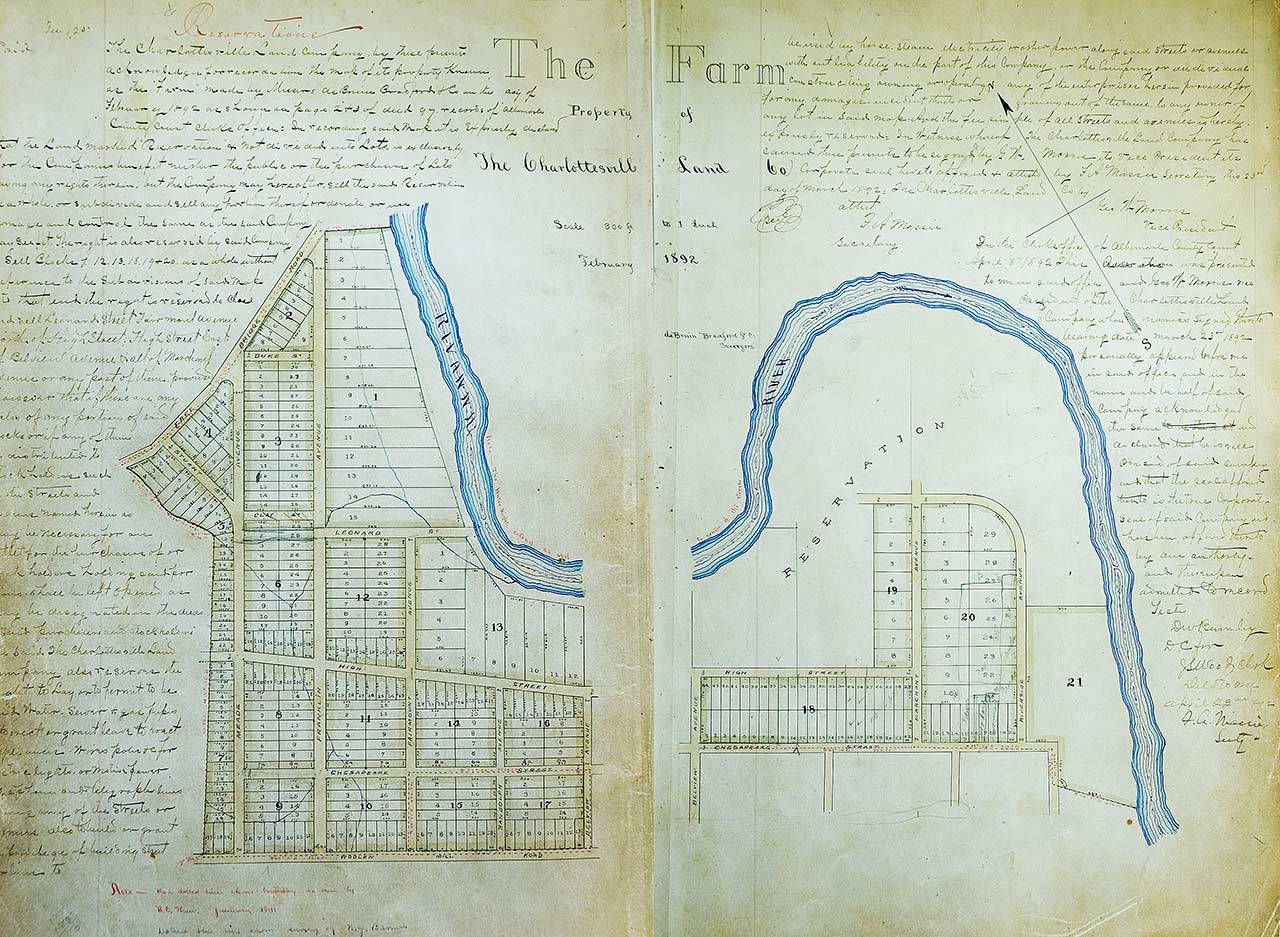
In 1891, Thomas Parish’s heirs sold the “prime Forest,” the steep-hillside with its grass sod, and nearly 200 acres of The Farm’s riverside land to the Charlottesville Land Company. The Charlottesville Land Company was the leading developer of residential subdivisions and had converted farmland on all sides of the downtown into modern suburban neighborhoods to accommodate Charlottesville’s expanding population. The Company filed the plat for its subdivision in February 1892; it appropriated the familiar historical name, calling the development The Farm. The plat established block, street, and lot lines, making the streets generally 50 feet wide and giving the typical residential lots 50 feet of street frontage and between 175 feet and 200 feet of depth. The residential lots closest to the Rivanna had a different form. These lots were twice as wide, with generally 100 feet of street frontage, and much deeper, ranging from 250 feet to 700 feet deep. Thus, the subdivision layout reflected the continuing value of the Rivanna in the region; it also clearly assumed that the riverside lots would be more valuable because of the scenic and aesthetic character of the River. The depth of some of the lots might also have reflected the continuing expectation that the river would flood and submerge the back yards of the most substantial residences in the new neighborhood. Moreover, the Charlottesville Land Company initially left the area of the “prime Forest,” the steep hillside, and grass sod as an undivided “reservation,” perhaps intending to develop the area as a park, although the Company did assert its prerogative to later sell or divide the land as it wished.
(Paul Goodloe McIntire’s Rivanna: The Unexecuted Plans For a River City is by Daniel Bluestone and Steven G. Meeks. This article was published in Volume 70 2012 of the Magazine of Albemarle County History by the Albemarle Charlottesville Historical Society. Copies of the Magazine are available at www.albemarlehistory.org)
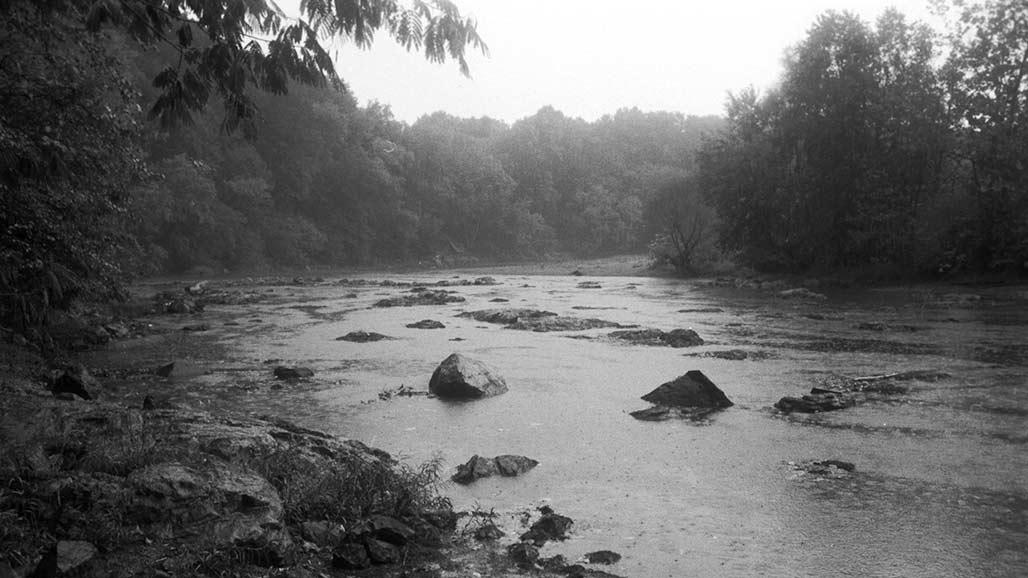
As agriculture and denser settlement developed along the Rivanna River local residents looked to the river to meet other important needs. The Rivanna provided waterpower to run mills that processed timber, grain, and wool. In many areas, tapping the river’s waterpower required the construction of dams that obstructed the older established patterns of river navigation. In the first third of the nineteenth century, the Rivanna Company and the Rivanna Navigation Company received state charters to undertake improvements, including canals and locks to carry boats around darns and river rapids. Thomas Jefferson’s 1771 hand copy of a survey of the lands of Nicholas Lewis, grandson of Nicholas Meriwether, nicely represents the vision of Charlottesville as a river community. The town and court square stand on the high ground separated by productive agricultural land from the Rivanna. Starting in the late-nineteenth and early twentieth century, this productive agricultural land, called The Farm, was taken out of agriculture and became a site for the expansion of Charlottesville settlement. This was also the same area where in 1920 Paul Goodloe McIntire sought to revitalize the connection amongst the town, the people, and the river-in the form of a major riverside park.
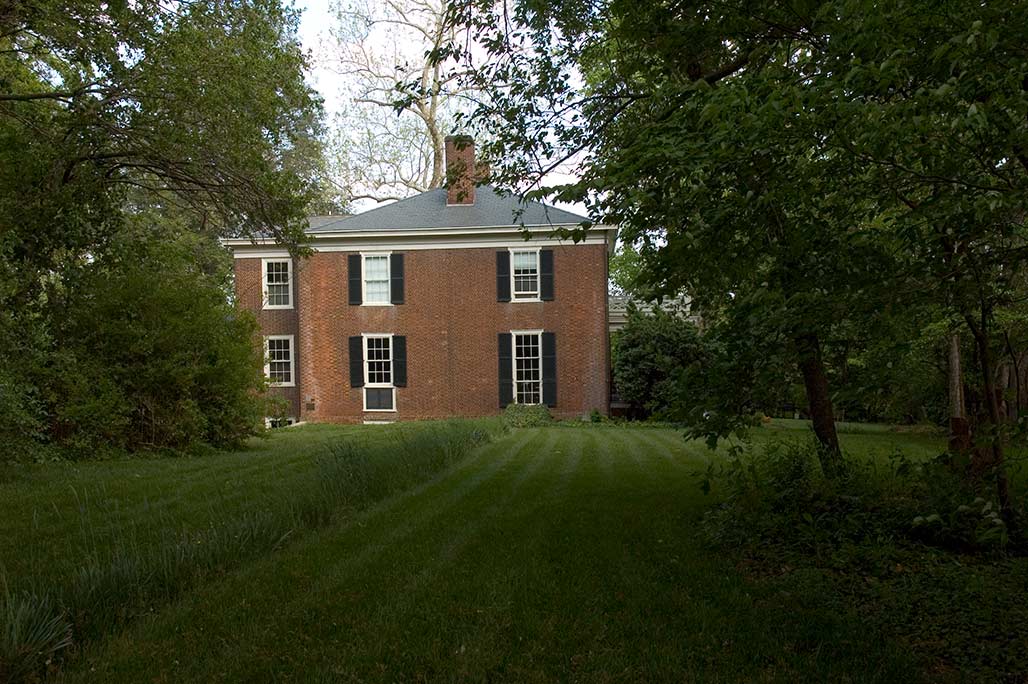
The riverside lands had passed through several owners between Nicholas Lewis and developers of the late nineteenth and early twentieth century. John A.G. Davis purchased large tracts of Lewis’s plantation in the 1820s. Davis commissioned architect Thomas R. Blackburn for a design. He drew upon the talents of builders William B. Phillips and Malcolm F. Crawford who had just finished work on the University of Virginia–to construct a new plantation house overlooking the rich bottomlands along the Rivanna. In November 1840, Davis, a law professor, was shot and killed as he tried to calm a student riot at the University of Virginia. In 1848, William Farish purchased the plantation for his son, Thomas L. Farish, who continued the century-old pattern of cultivating the land. In 1860, the plantation had 300 acres of improved land and 180 acres of forests and meadows. Farish owned 13 horses, 4 mules, 13 milk cows, 4 oxen, 18 cattle, and 22 pigs. In 1860, his fields yielded 15,000 pounds of tobacco, 1,000 bushels of wheat, 2,250 bushels of corn, 50 tons of hay, and 40 bushels of potatoes, while his cows produced 205 pounds of butter. Thomas Farish and his family did not sow or harvest these agricultural products on their own; in 1860, Farish owned 37 slaves who worked his plantation. As a captain in the Confederate Army, Farish fought to preserve this system. At the conclusion of the Civil War, after losing his enslaved labor, Farish began to rent out his land to local farmers.
(Paul Goodloe McIntire’s Rivanna: The Unexecuted Plans For a River City is by Daniel Bluestone and Steven G. Meeks. This article was published in Volume 70 2012 of the Magazine of Albemarle County History by the Albemarle Charlottesville Historical Society. Copies of the Magazine are available at www.albemarlehistory.org)